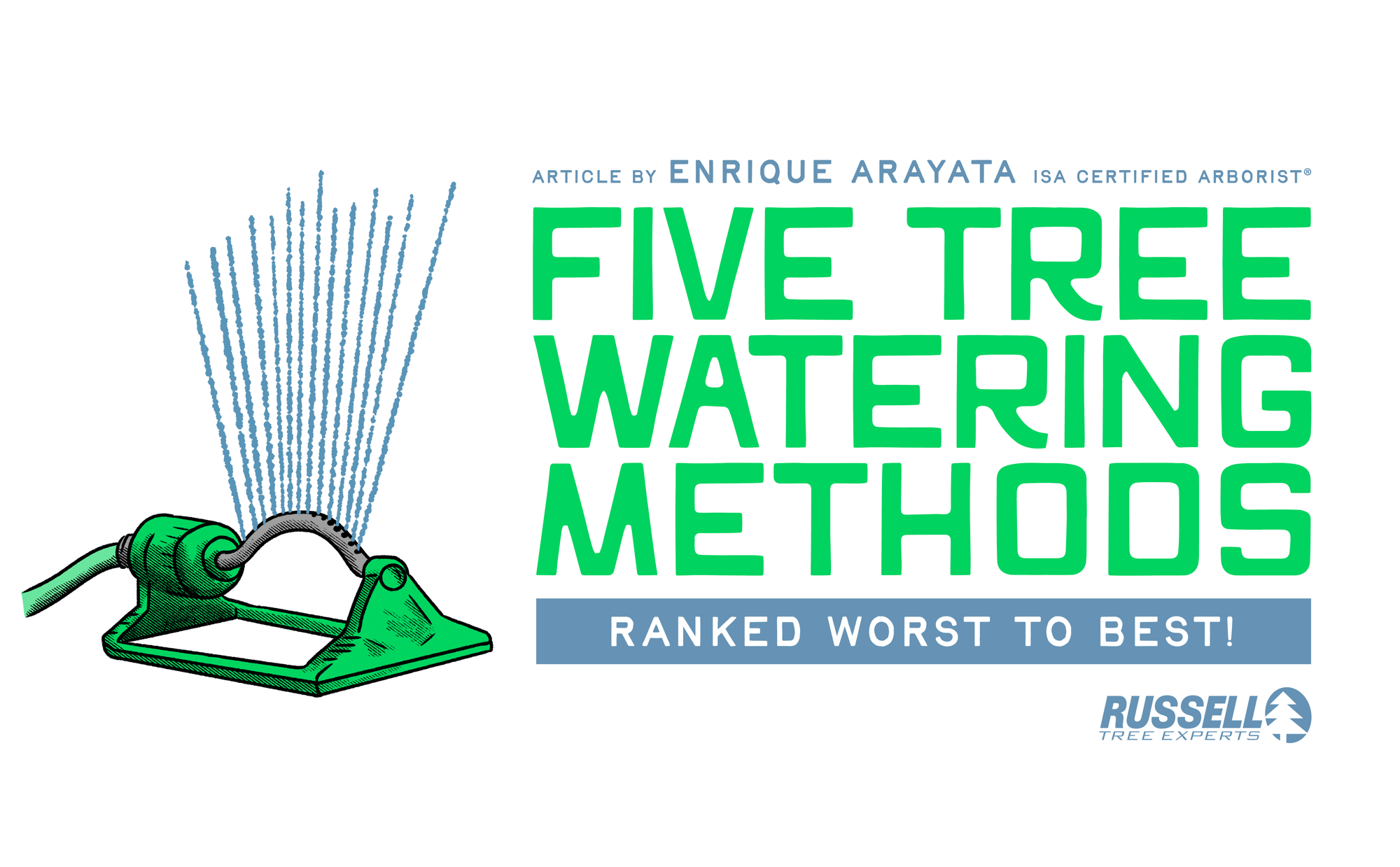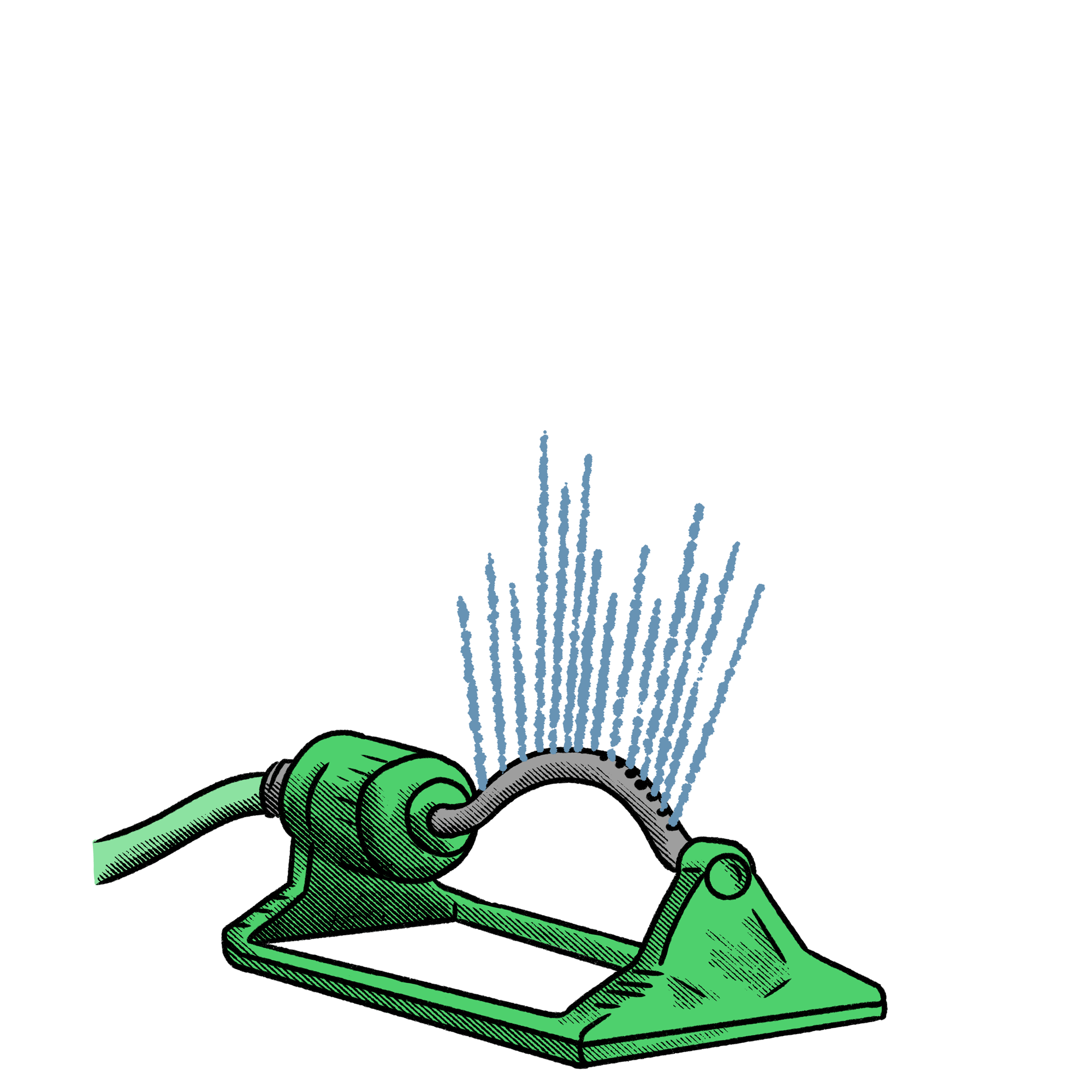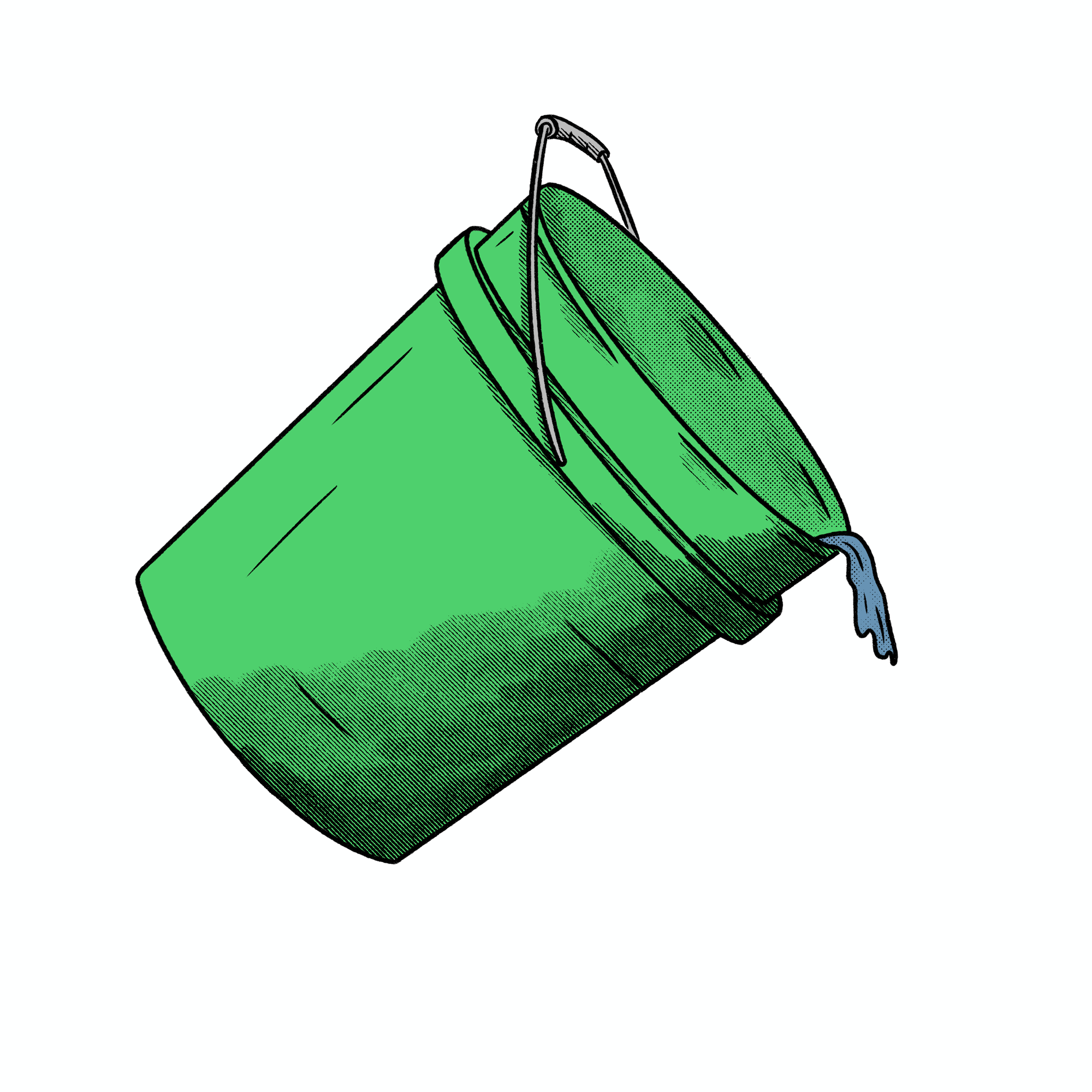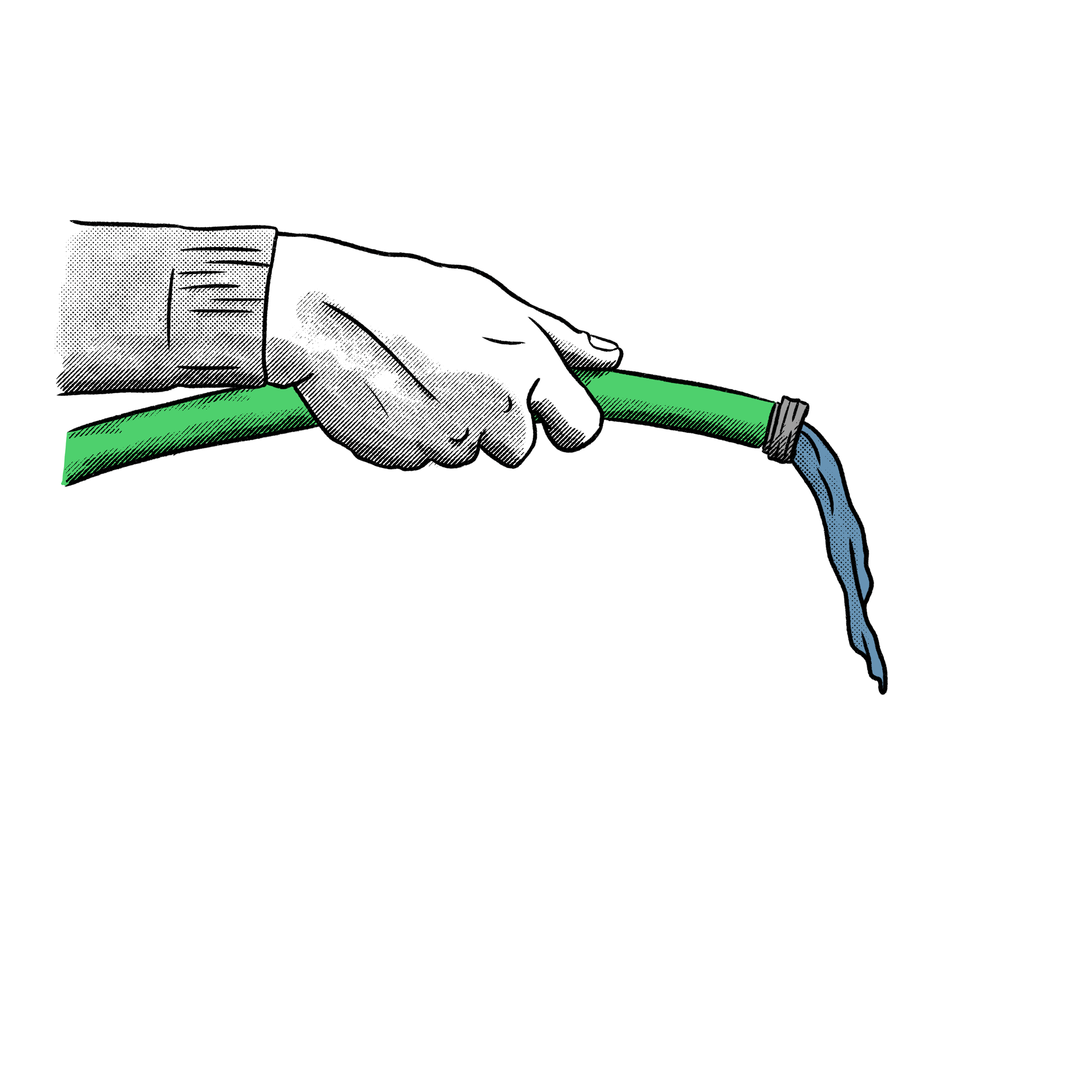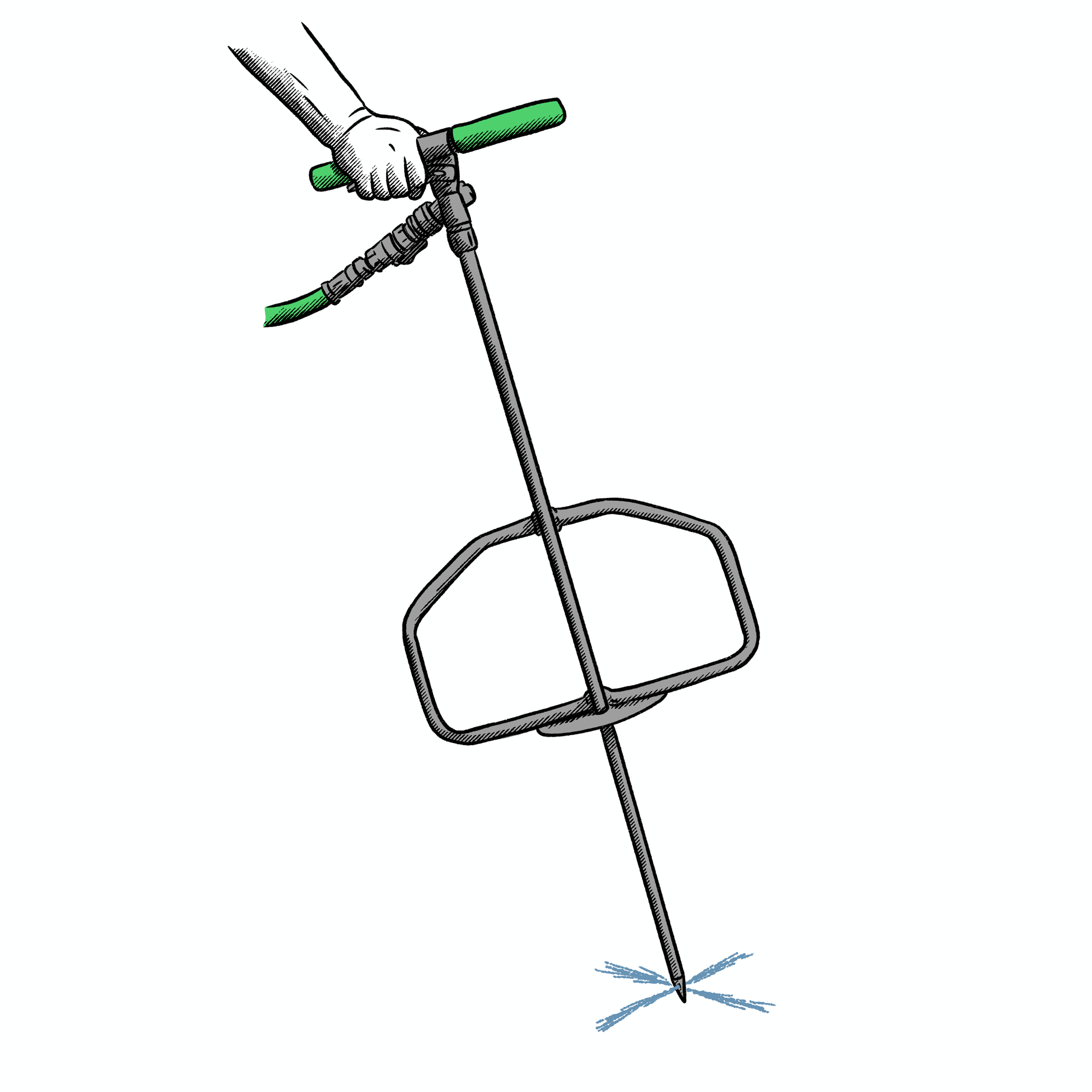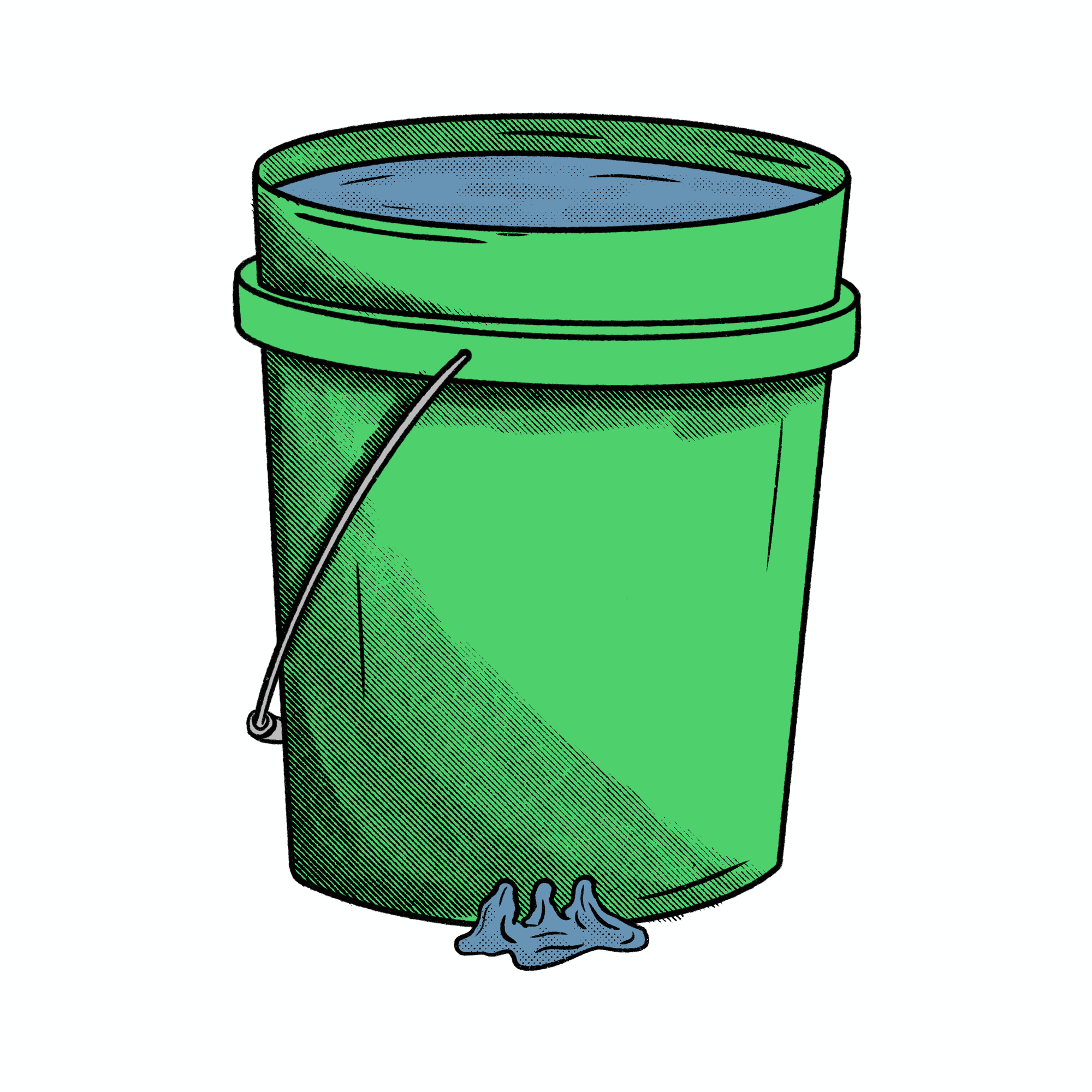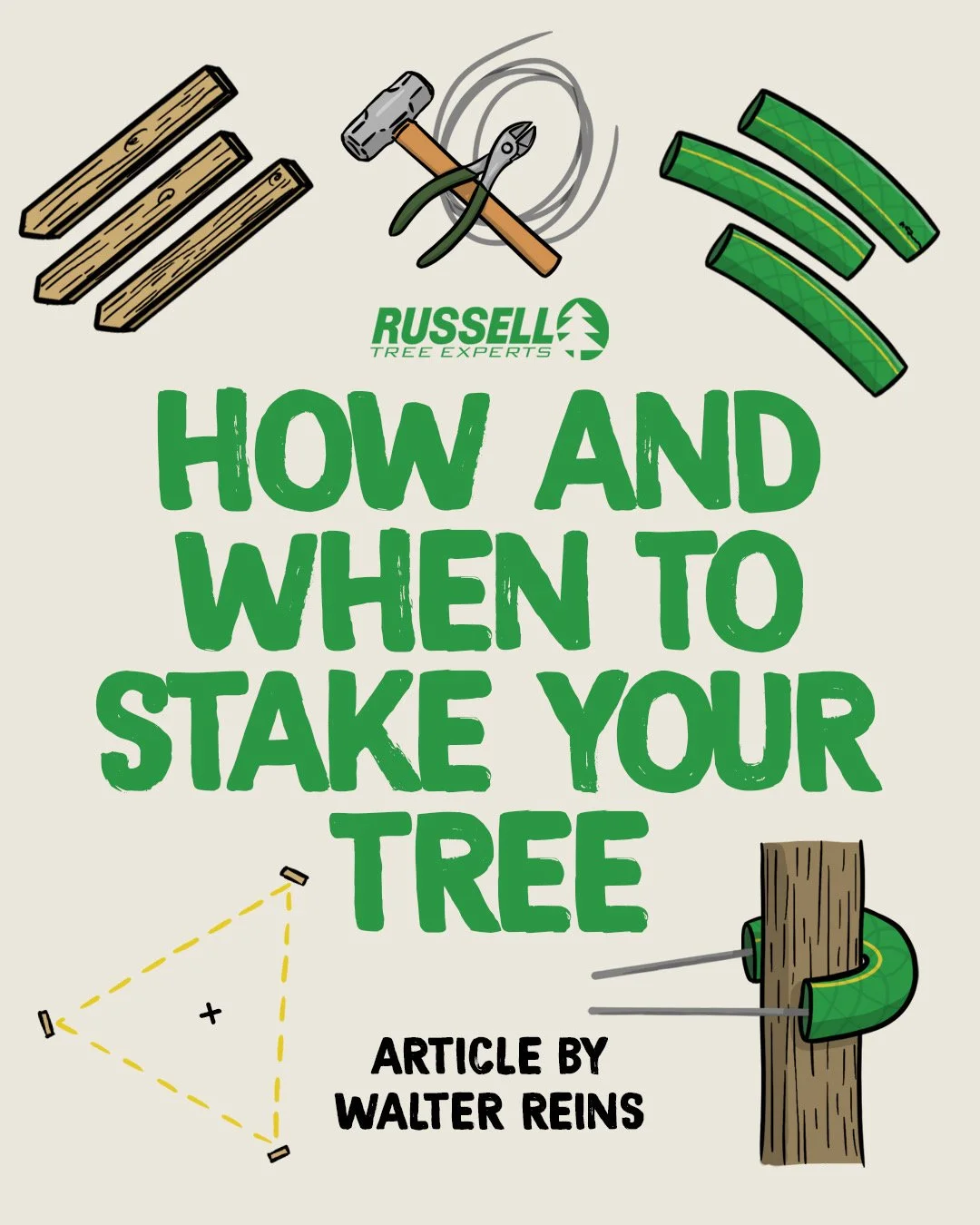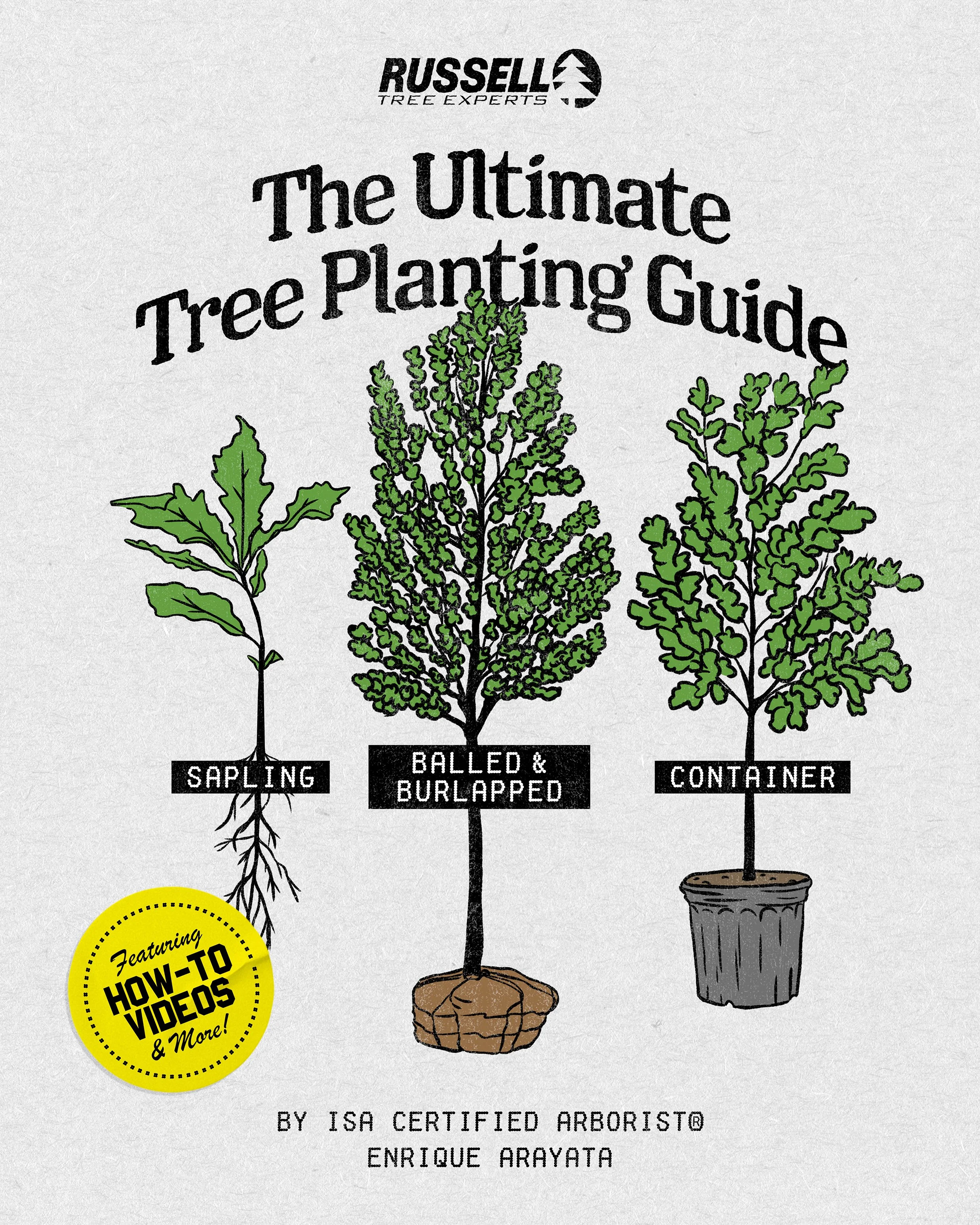By Enrique Arayata
ISA Certified Arborist® OH-7252A
July 24, 2025
WHY WATER A TREE?
Water is one of the most important resources for a tree’s health and vigor. Without sufficient water, a tree will stop growing and eventually decline to its death. However, on the flip side, too much water for a tree and its root zone can also lead to a tree’s decline. As with many things in life, proper tree watering is about finding that balance and being somewhere between too little and too much watering. Let’s go over 5 different ways to water a tree from worst to best!
HOW TO WATER A TREE?
OPTION 1
LAWN SPRINKLER
Watering a tree with a sprinkler or hose is one method of tree watering, however, it is typically inefficient for trees and woody plants. A tree takes in water through its roots, and it is common to see sprinklers and hose operators spray water on the tree’s trunk and leaves. Not only is this an inefficient use of water, but it can lead to leaf scorch if watering is done during a bright and sunny day. A slightly more effective method would be to point the water towards the tree roots, but another issue to be cautious of is water running off and ending up elsewhere such as nearby grass, plants, concrete, or towards a sewer drain. Over time, this can also contribute to erosion through soil displacement. This can be minimized by installing a tree mulch ring with a subtle berm around the perimeter so that the mulch can retain as much water for the tree as possible. Out of the 5 tree watering methods discussed here, this would be my last option, but it is better than nothing and is a good alternative to not watering at all.
Overall Rating: ★☆☆☆☆
OPTION 2
Water BUCKET
A second way to water a tree would be to grab a bucket, fill it with water, and then dump it over the tree’s root zone. This will do a better job at targeting the tree’s roots for proper water absorption and minimize any risk of leaf scorch by keeping the leaves dry, but water runoff can still be a concern, especially if you dump the water all at once. To minimize this, the bucket of water can be slowly distributed in a circle around the tree anywhere from 1 to 3 feet away from the trunk. A disadvantage to this approach is that too much water at one time can lead to runoff.
Overall Rating: ★★☆☆☆
Option 3
WATERING CAN/GARDEN HOSE
Another tree watering method would be to slowly water the tree using a watering can or a garden hose on a slower, softer setting. Avoiding the trunk and canopy of the tree will eliminate the risk of leaf scorch and reduce the rate of evaporation. Watering at a slower, longer duration will help water infiltrate deeper into the root system and encourage more outward root growth. If using a watering can, I recommend watering 1-2 inches away from the surface and in a circle around the canopy drip line to minimize water runoff.
Overall Rating: ★★★☆☆
OPTION 4
IRRIGATION LANCE
Next up, is watering a tree with an irrigation lance! Deep root irrigation (DRI) involves the use of an irrigation lance to penetrate the surface of the soil and inject water a few inches below ground level, directly targeting the root zone of the tree. Benefits of this watering method are that it minimizes water absorption by aboveground, competing plants, and eliminates any water runoff. Additionally, the water comes out of the lance at about 200 psi and splits into four separate streams that help to break up compacted soil and add valuable pore space into the soil profile for future root growth.
Deep root irrigation is a service that Russell Tree Experts offers to customers, but an irrigation lance can also be purchased at a home-and-garden store that can connect to your garden hose at home. One detail to consider is that the water from your garden hose may not come out at a high enough psi to break up some compacted soil, but you would still be achieving the goal of watering your trees! One benefit of having Russell Tree Experts water your trees is that we can access trees hard to reach by garden hose (if they are far away from the hose bib) and also water your trees if you are not home, such as on vacation!
Overall Rating: ★★★★☆
More on deep root irrigation!
OPTION 5
DRIP IRRIGATION
And lastly, one of the most effective and efficient methods of watering a tree is through drip irrigation. This is the process of applying water slowly over an extended period of time. Drip irrigation is very similar to method 3 (with the watering can/garden hose), but the difference is that you slow it down significantly and water over the course of an hour, or even longer depending on the size of the tree. This heavily reduces the potential for water runoff, soil/mulch erosion, and water evaporation. Due to the slower release, the tree will take in water for longer compared to a quick, few minutes of hose spraying. Less water can be used as a higher percentage of water will be targeted towards the tree and not stolen by nearby grass and plants or evaporated by the sun.
The most expensive way to perform drip irrigation is to install an underground irrigation system with aboveground drippers poking out near the tree’s root system. A cheaper alternative is to use a garden hose nozzle with a locking system, on a low output setting like mist or soaker, to water your tree! Just don’t forget to pick it up once you’re done! Another solution is to use a bucket of water and poke 2 to 3 tiny holes at the bottom so that the water will slowly release. Be cautious as the holes can be clogged up by debris and, depending on the size of your bucket and tree, you may need to refill the bucket more than once. Lastly, another form of drip irrigation is using a tree watering bag. Garden centers typically sell 20-gallon tree watering bags that can be quickly filled but slowly released. Similar to the bucket, the holes can also get clogged up by debris and will need to be inspected periodically.
Overall Rating: ★★★★★
Drip irrigation in action!
HOW MUCH WATER FOR A TREE?
Now that you have learned about the worst and best ways to water a tree, you may be asking yourself “how much should I water my tree?” Well... it depends! The International Society of Arboriculture (ISA) does not have set guidelines, and neither does Russell Tree Experts. A general rule of thumb is somewhere around 5 to 10 gallons per inch of trunk diameter at breast height (dbh). Various factors can affect the exact volume such as water runoff, evaporation rate depending on if it’s sunny or hot versus cold and cloudy, competition from nearby grass and plants, level of tree establishment, amount of precipitation during the week, and your patience and commitment to watering. For instance, a newly installed 2-inch dbh tree in the summer at full sun may need 20 gallons of water while an established, more mature 10-inch dbh tree on a cloudy, fall day may only need 50 gallons of water.
WHEN TO WATER A TREE?
The best time of day to water a tree is during sunrise or sunset. Temperatures are generally cooler, and the sun is less prevalent, leading to reduced evaporation and leaf scorch. Wet leaves overnight have a risk of fungal and disease issues while wet leaves in the middle of a sunny day have a risk of leaf scorch.
In terms of frequency... it depends! A newly planted container tree will benefit from watering every 2 to 3 days and a newly planted balled-and-burlapped tree once per week for at least the first 2 to 3 growing seasons (spring through fall). A large, mature tree may not need to be watered except in periods of extended drought and can water itself through its large root system or natural rain. During sunny, summer weather, all trees can benefit from tree watering every few days. During colder, winter weather after first frost, trees may not need to be watered at all except in fringe cases such as planting an evergreen tree late in the fall. If you want the broadest rule of thumb that comes with many exceptions and caveats, water your tree 3 to 4 times per week in the summer, 2 to 3 times per week in the fall and spring, and 0 times per week during most winters, adjusting this based on the tree’s root establishment, weekly temperature, and level of precipitation during a given week.
WHERE TO WATER A TREE?
The answer to this question does NOT depend! The best location to water a tree is in a circle around the tree between the trunk and canopy drip line. The canopy drip line of a tree is the furthest point that a tree’s leaves reach out to and will drip water during a rainy day. In other words, if you look straight up and do not see any leaves, you are past the canopy drip line. There is a common misconception to water a tree right next to the trunk a few inches away. Although this is not a bad location, a tree can take in water from even further away and water should be as uniformly distributed as possible to promote healthy and outward root growth!
The canopy drip line of a tree is the furthest point that a tree’s leaves reach out to and will drip water during a rainy day.
CONCLUSION
And there you have it, the essentials of what you need to know about watering a tree! The only other tip I recommend is to install a 2- to 4-inch-deep tree mulch ring around the tree to help conserve water for the tree. A tree mulch ring has a plethora of other benefits such as increased nutrient availability, better temperature regulation, decreasing the risk of stem-girdling roots, outcompeting with other plants, minimizing trunk damage, soil decompaction, and increased visual aesthetics! Just be cautious of piling mulch near the root flare/base of the tree! The mulch ring should be level, and the root flare should be exposed. As my friend and coworker TJ Nagel, an ISA Board Certified Master Arborist®, once said, “watering is the single most importance maintenance factor in the care of newly planted trees.” For a free tree work quote by one of our 25+ ISA Certified Arborists®, including deep root irrigation, visit RussellTreeExperts.com/Quote or speak to our friendly, local office staff at (614) 895-7000!
ADDITIONAL ARBOR ED™ ARTICLES!
Enrique Arayata I Media Production Manager, Russell Tree Experts
Enrique is an ISA Certified Arborist® and FAA Certified Remote Pilot. In his free time, he enjoys working out, hanging out with his family and girlfriend, video production, photography, cars, technology, and cooking. Enrique has a BA in moving image production with a double minor in film studies and studio art specializing in photography from The Ohio State University, and an AA in web graphic design from DeVry University. His favorite tree is the Kwanzan cherry tree.

